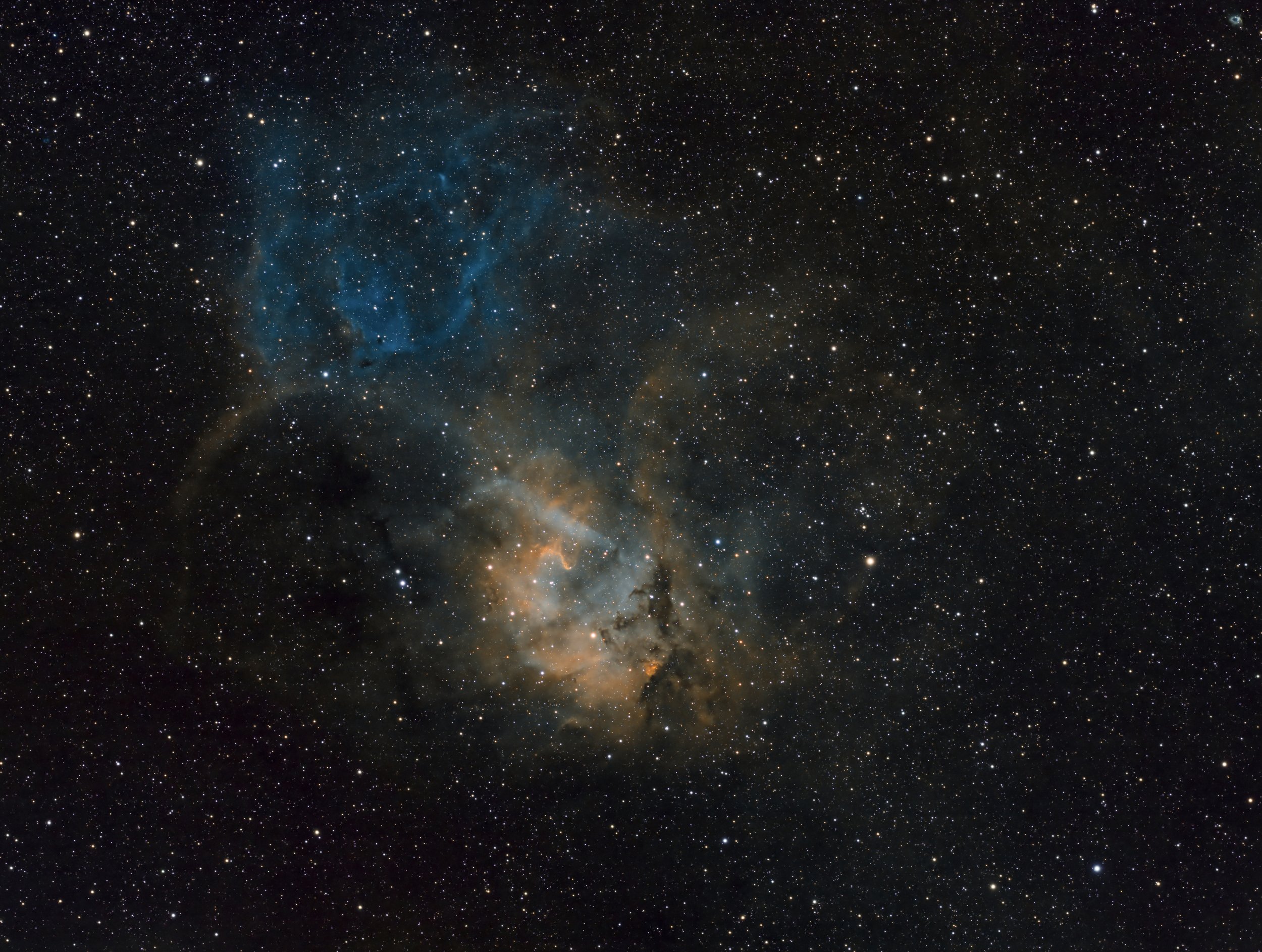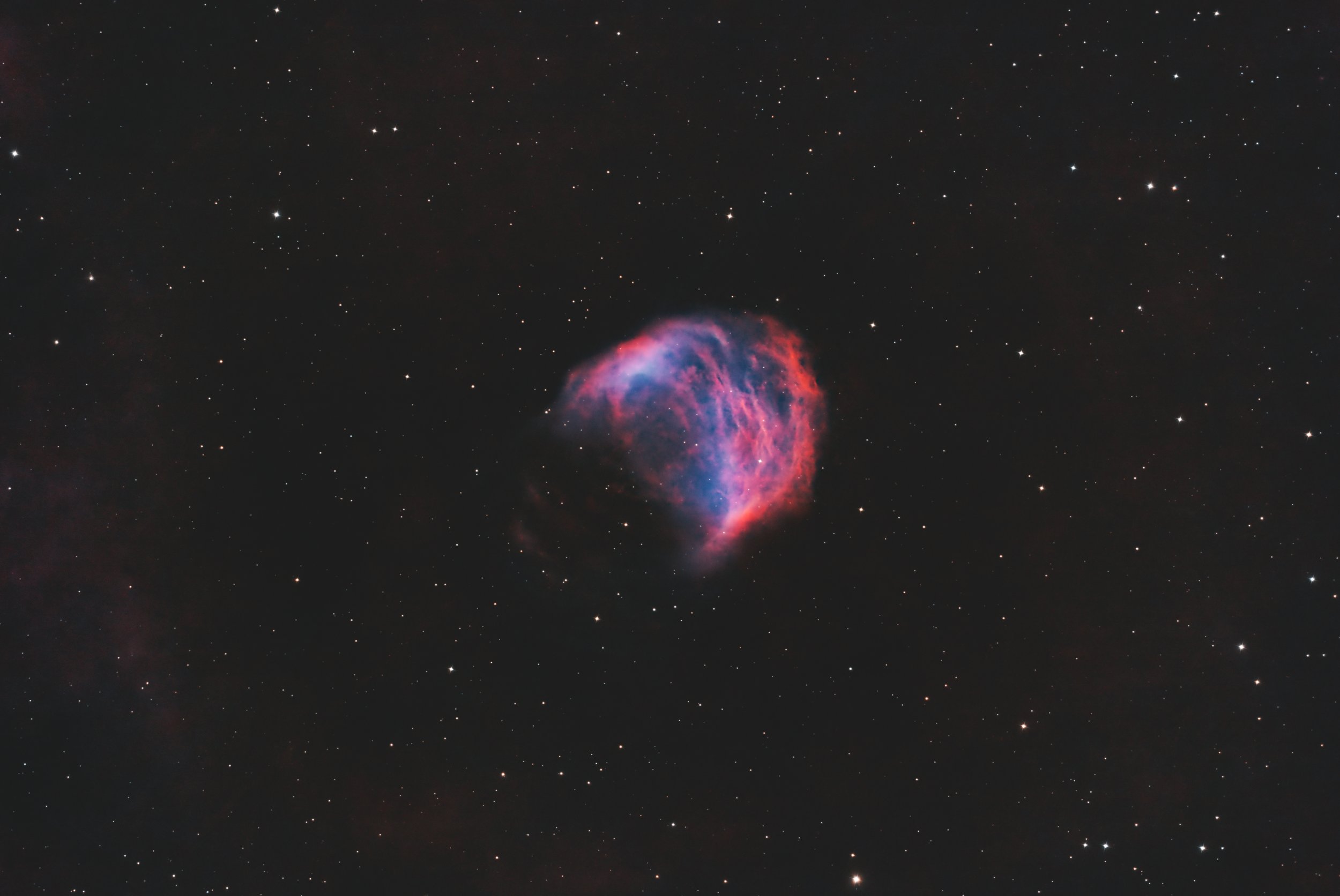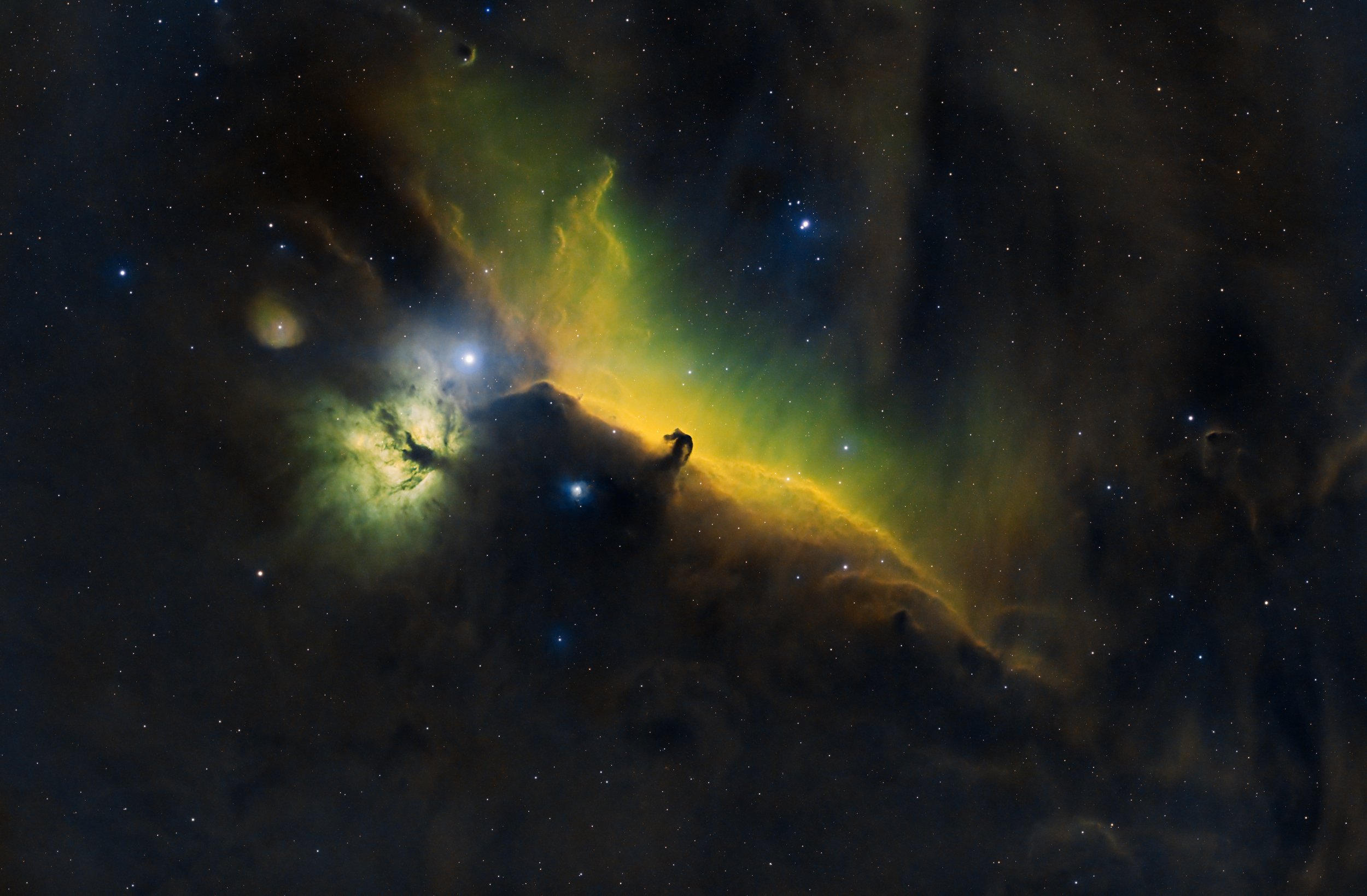The Lion Nebula

The Lion Nebula, also known as Sharpless 132 (Sh2-132), is a bright emission nebula located in the constellation Cepheus. It's a region of active star formation, characterized by the presence of young, hot stars that emit intense ultraviolet radiation. This radiation ionizes the surrounding hydrogen gas, causing it to glow in the characteristic red color of hydrogen-alpha emission.
Some key facts about the Lion Nebula (Sh2-132):
Location: Sh2-132 is situated in the constellation Cepheus, which is part of the Milky Way galaxy. Its coordinates are right ascension 22h 45m and declination +63° 00', making it a northern hemisphere object.
Appearance: The Lion Nebula has a distinct, intricate structure with bright regions of gas and dark, dusty lanes. These features are typical of emission nebulae and are often the result of the complex interplay between newly formed stars and the surrounding gas and dust.
Star Formation: The intense radiation from young, massive stars within the nebula is responsible for ionizing the surrounding gas, causing it to emit light. These stars likely formed within the nebula, and their energy output has sculpted the surrounding material.
Distance: The precise distance to the Lion Nebula can be challenging to determine accurately. It is estimated to be located between 1,000 and 2,000 light-years away from Earth.
Astrophotography: The Lion Nebula is a popular target for amateur astronomers and astrophotographers due to its intricate and visually striking appearance. Long-exposure images can reveal its intricate details and vibrant colors.
Scientific Research: Astronomers study regions like Sh2-132 to gain insights into the processes of star formation, the interstellar medium, and the life cycles of stars. Observations of emission nebulae like this one contribute to our understanding of the broader structure and dynamics of the Milky Way.
I’ve been a dedicated to Squarespace fan for 20 years. Love the product, people and company.





